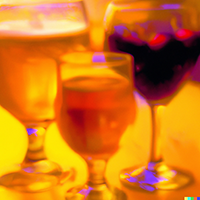Fruit Purees for Beer and Winemaking: A Comprehensive Overview
Posted by Matteo Lahm on 24th Jan 2024
Fruit purees are an increasingly popular ingredient for both beer and winemaking. By adding pureed fruit, you can make your batches stand out. In this article, we will explore how they are made, and how your batches will benefit from their inclusion.

Fruit purees are made by blending whole fruits with a liquid such as water or juice. This process creates a smooth, homogenous mixture that can be used in beer and wine recipes. The fruit is processed to a smooth consistency, strained to remove seeds and other large particles, acid adjusted and then pasteurized.
Fruit Purees are especially convenient for beer makers. Because purees are pasteurized, they can be added during fermentation without any risk of bacterial infection. The benefits are fourfold: they impart fruit flavor, color, aroma, and increase the level of fermentable sugar. Depending on the type of fruit being used, some brewers may choose to strain the puree through a sieve or cheesecloth to remove any large particles that could affect the clarity of their finished product. Fruit-infused beers, such as Belgian lambics, Berliner Weisse, and sour ales, are often made with fruit purees. Other popular styles of beer that are often made with fruit purees include fruit wheat beers, fruit pale ales, and fruit IPAs.
Winemakers can either use them as is, mix them with fruit bases, or with fresh fruit batches. Using them by themselves can achieve very good results but can be cost-prohibitive. You will also need to add sugar if you want a higher ABV. The brix of fruit purees is on par with the natural sugar levels of the fruit, so they will have less sugar than grapes. The average ABV of any given fruit wine is about 6-8%, while grape wines are on average 11-14%.

On the upside, you will not need to adjust acidity if your recipe does not call for the addition of water. If you are blending your purees with a properly mixed fruit base, you will maintain consistent acidity. Since a 4.4# box of puree will only yield about 2 gallons of wine, it is common to use them in conjunction with fruit bases. The combination of the two produces a flavorful wine with good color at a much lower cost than using purees by themselves.
With fresh fruit, they not only enhance flavor, color, and aroma, they have additional benefits with increasing pulp, sugar, and pH. Fruit purees add a lot more fruit matter to your batch and reduce added water. They only contain sucrose, which is preferable for your wine yeast. So, you will need less sugar to increase your ABV. The reduction of water also lessens the amount of acid blend you will need to add.
Fruit purees can add a wealth of flavor, aroma, and color to beer and wine. Because purees contain the juices and pulp of the fruits, they can provide a more intense flavor and aroma than other methods of adding fruit. This can help to make a beer or wine more unique and appealing. Purees can also add an attractive color to a beverage, such as a golden hue to a wheat beer or a deep pink hue to a rosé. Almost any type of fruit can be used to make a puree, from sweet fruits like apples and pears to tart fruits like cranberries and raspberries. Other popular fruits are cherries, peaches, and strawberries. Fruit purees are great for making wine and beer.

